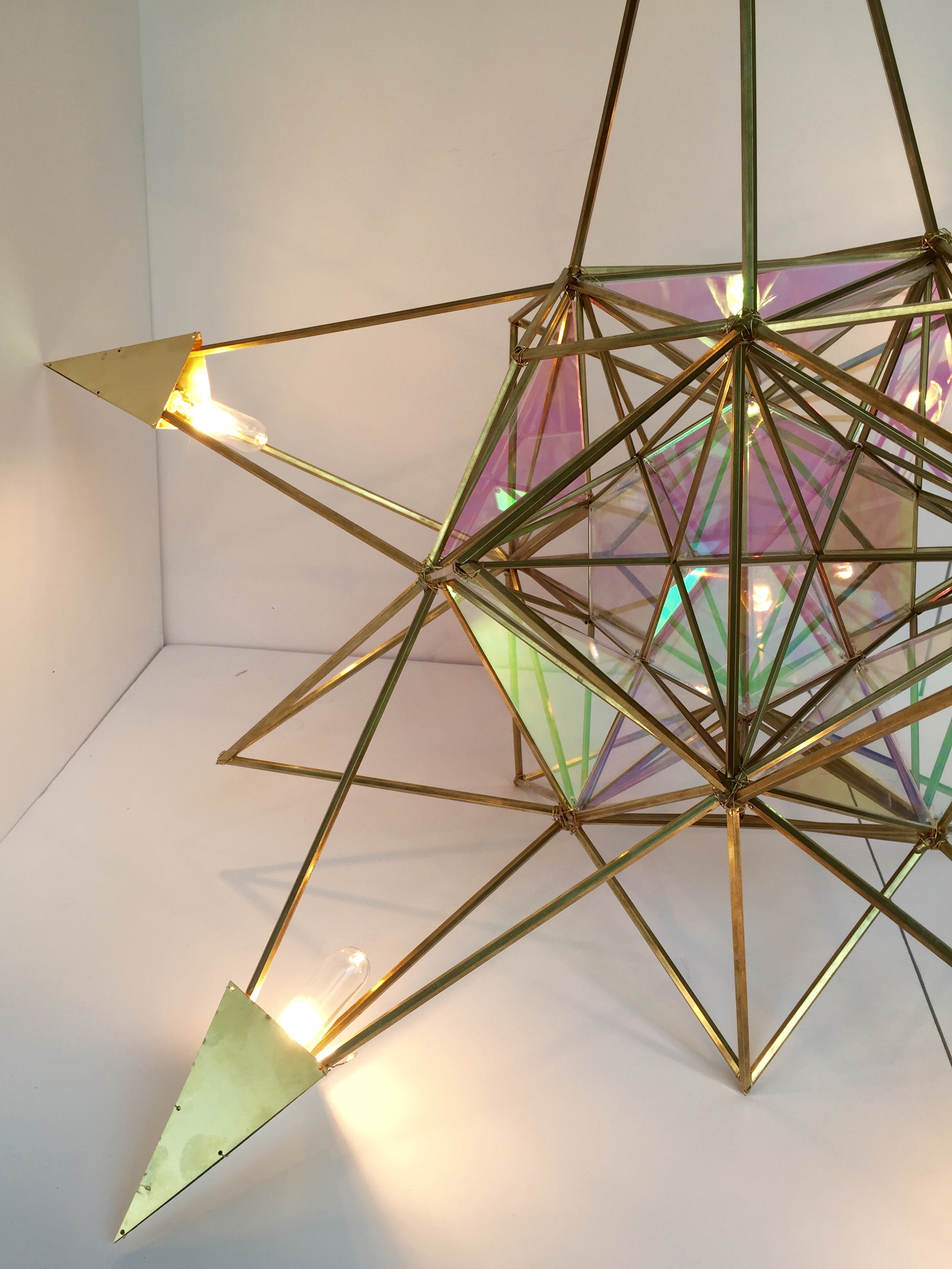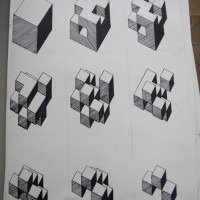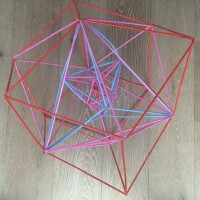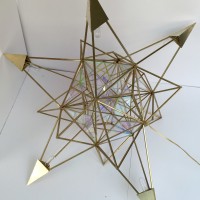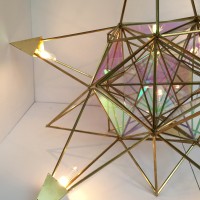For our last project, luminous volume, we explored the “omnipotent flexibility, mutability and modularity of polygons and polyhedrons.”
First, we had an axonometric drawing class, where we were asked to draw 9 cubes that are each made out of 27 smaller cubes. Starting from the top left, we had to take away 3 of the smaller cubes from each large cube, until ending up with only 3 cubes for the last drawing. These drawings were then supposed to be colored in, in a way that enhances the idea of the different sides of the cube.
We then explored polyhedrons and their nets through an exercise with wire, straws and chipboard. We were asked to build tetrahedron made out of isosceles chipboard triangles. This was then outlines with straws and wire. Six to seven straw layers were added onto this, creating a more complex polyhedron. Finally, we built a net out of chipboard to wrap the polyhedron in. To enhance the idea of different layers, I decided to change the color depending on the layer.
The task for the final object was to build a polyhedron lamp using mechanical connections only. These lamps are required to be used after they are finished. We explored different metals and ways to process and use them, such as plexi glass, sheet metal, and rivets.
For my lamp, I decided to reuse the concept of having one basic geometric shape in the middle that is then built on. I made a series of straw models, trying a triangle and a cube, as well as a dodecahedron as the base of the construction.
I settled on the idea of having a dodecahedron base, with 3 more layers on top of that. For the materials, I chose pentagon shaped brass tubes, as I firstly liked the reoccurrence of the shape, and secondly think the brass creates a very comfortable, yellow light. As the light bulbs are sitting in the edges, rather than in the middle of the lamp, I put reflective plexiglass opposite of the light bulbs, so that the light is reflected outwards. Instead of using normal silver mirror, I chose to work with iridescent plexi, as it creates a very interesting reflection that is sometimes pink and sometimes green, depending on the angle the lamp is looked at from. Considering the very sleek and monotone design of the lamp, I believe this adds a pop of color and makes the lamp more interesting, and also more unique. The dodecahedron in the middle is also covered with iridescent plexi pentagons, to 1) stabilize the core and 2) enhance the shape of it.
When measuring and cutting the metal pipes, I cut each one at an angle and then filed it down, so that the points where all the tubes meet are as clean as possible. I would say this was the most time consuming task, as it was very challenging to find the exact angle needed.
Out of the 20 tips in the last layer, only 5 have a light bulb. These 5 are the biggest ones. The top tips are covered in brass sheet metal, matching the tubing, to protect the viewer from the very bright light of the light bulb. However, the tip of the light bulb is visible. I chose to not hide the light bulb completely, because I felt like it fit very well with the contemporary look of the whole lamp. Geometrical shapes are very in right now, and can be found in many furniture stores. Another thing that is very in trend, is seeing the light bulbs, giving the whole lamp a retro feel to it. Furthermore, a lot of the light would have been lost, if the light bulb would have been completely covered up, and therefore a lot of the reflection would have gotten lost.
Alternatively to the yellow light bulbs, I played around with different colored light bulbs, my favorite one being the pink one. Even though the look of the pink one is very cool, I still decided to go with the classic yellow one, as I felt like it works very well with the brass color. Additionally, the pink light took away the different colored reflections of the iridescent plexi, as all reflections were then pink.
Evaluating the process of making the lamp as well as the end result, I would consider my project very successful, and I am very satisfied with the result. I spent a lot of time and effort on it, but looking at the result, I would definitely say it was worth it. Looking at possible improvements, I thing the connections are the biggest weakness of the piece. As they could only be connected mechanically, there is a lot if wire showing that is holding the lamp together. It would look much neater if the tubes would have been welded instead, so that the edges would look seamless.
